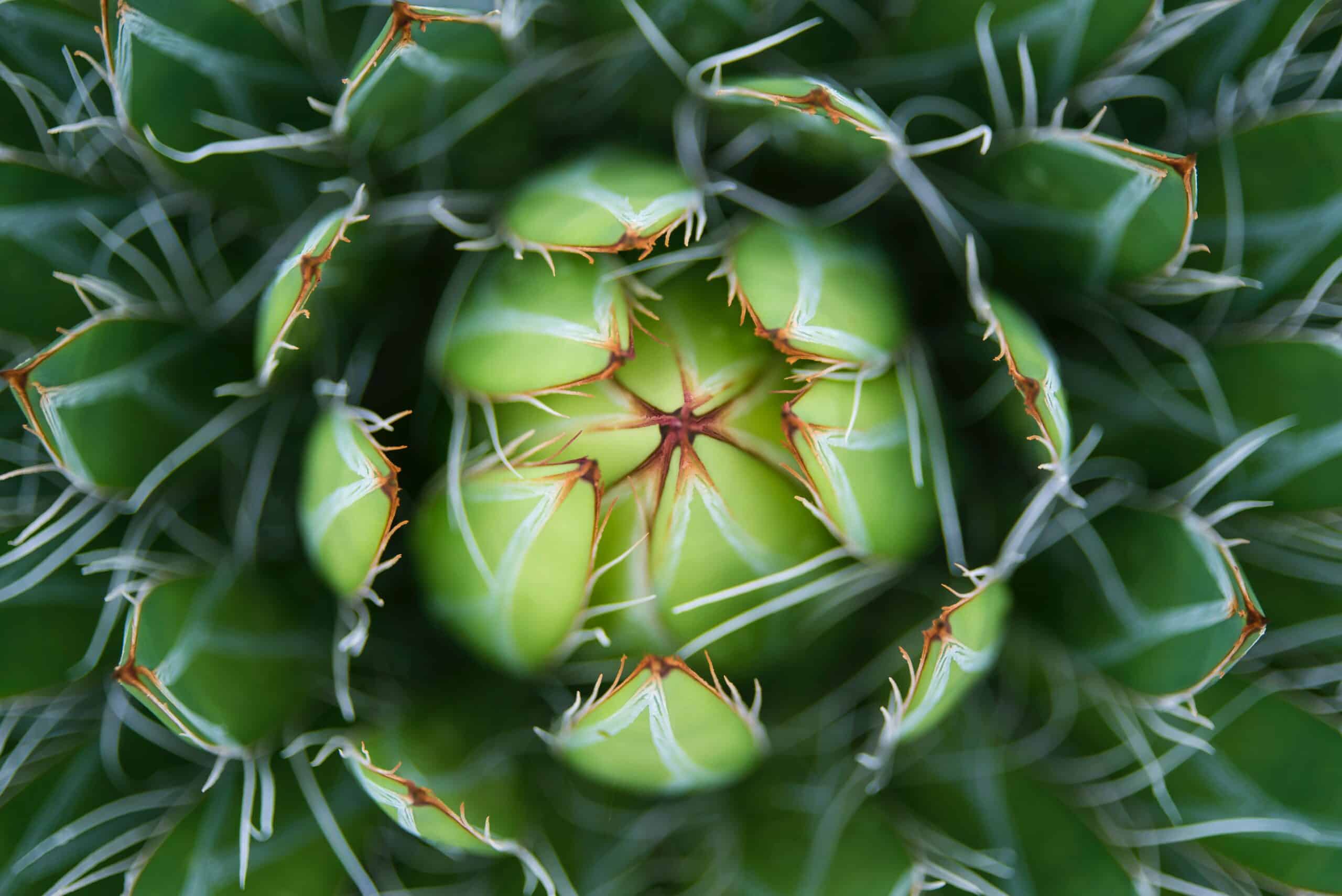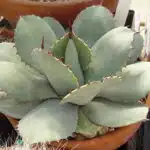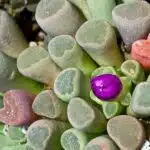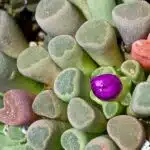Agave plants are a popular choice for those looking to add some life and color to their home or garden. Take, for example, the story of Angela: when she first moved into her new condo in Seattle, she wanted to bring some of the outdoors inside her home. She chose several Agave plants from a local nursery and was amazed at how quickly they adapted to their new environment and brought new life into her home.
Agave plants are known for being easy to care for and have been used as decorative elements in homes around the world for centuries. In this article, we will provide an overview of Agave plant care and growing tips that you can use in your own home or garden. We will discuss the different types of Agave plants that are available, ideal growing conditions, water requirements, fertilizing needs, pruning techniques, pests and diseases that can affect your Agave plants, and other helpful tips.
Whether you’re just getting started with growing Agave or you’re already an experienced gardener looking to improve your skillset; this guide provides all the information you need to ensure that your Agaves thrive! So let’s get started by taking a look at the different types of Agaves available and how they can be used in your home or garden.
Agave Varieties
The agave plant is an exotic and unique species, one that can bring a touch of elegance to your garden or home. With its spiky leaves and interesting shape, it’s hard to ignore the beauty of this succulent. But with so many varieties available, which one should you choose?
Imagine the possibilities: large or small, bright green or variegated in cream and yellow, each agave variety offers something special. Whether you’re looking to add a dramatic focal point or simply fill in some gaps between plants, there’s an agave variety out there for you. Plus, they are amazingly low-maintenance; once they’re established they need very little care.
No matter which type of agave you choose, be sure to find out what sun and light requirements it needs in order to thrive. Some varieties are more tolerant of shade than others; some need full sun all day long while others do better in partial shade. Knowing your particular type will help ensure its success in your garden or home.
Sun And Light Requirements
A plant’s environment is crucial to its care, and agave plants are no exception. As the adage goes, “Give a man a fish and you feed him for one day, teach a man to fish and you feed him for a lifetime” – the same can be said of caring for an agave plant. When it comes to light requirements, there are several important considerations.
First and foremost, agaves need plenty of direct sunlight – 6-8 hours a day is ideal. However, they will also tolerate some partial shade, so if your home or garden gets less than that amount of sun during the day then you can still grow an agave in that spot. Additionally, depending on your location, you may want to provide extra protection from too much direct sunlight with shading cloths or other materials. This helps protect their leaves from burning in harsh sunlight.
The best way to determine if your agave has enough sunshine is to observe how it looks; it should be growing in abundance with healthy foliage appearing green and lush rather than pale or yellowish. If you find the plant is not thriving despite adequate light exposure then you may need to adjust the amount of sun accordingly or consider adjusting soil preparation needs as well.
The right soil preparation plays an integral role when it comes to providing adequate nutrients for your agave plants’ health and growth.
Soil Preparation
Soil preparation is an important part of growing Agave. This succulent is a hardy plant, but it does require well-draining soil to thrive. To get the best results, you’ll want to make sure that your soil is able to provide adequate nutrition and moisture to the plants.
When preparing the soil for Agave, it’s important to create a mixture that contains both organic and inorganic components. Adding compost or other organic matter will help improve drainage and provide nutrients. You can also add some lime or dolomite as well as some sand or gravel to increase aeration and drainage.
It’s also wise to consider the pH level of your soil before planting Agave. The ideal pH range for this succulent is between 6.0 and 8.0; if your soil falls outside of this range, you may need to adjust it before planting by adding amendments such as sulfur or lime. With these tips in mind, you’re ready for the next step: planting guidelines!
Planting Guidelines
When it comes to planting Agave, there are a few guidelines that should be kept in mind. Let’s dive right in! Everyone loves the idea of having a beautiful succulent garden, but if you don’t take the time to plant them properly, your dreams of lush foliage will be a distant memory. To ensure your Agave thrive and live their best life, we’ve got some tips for you to follow.
First off, make sure your soil is well-draining – this is key for any succulent. To do so, mix in sand and extra organic matter like peat moss or compost. This will help keep moisture from settling and rotting the roots of your plants. Additionally, make sure that the soil pH is in an ideal range (6-7) for Agave plants; too acidic or alkaline may cause problems with growth and health of the plant.
Next up: planting guidelines. Making sure you have enough space between each plant is essential; if they get too close together they can compete for nutrients and water needed to survive. When it comes time to actually put the plant into its new home, be sure to gently press down on the soil around it–this will help create a better connection between roots and soil and increase stability as well as encourage them to spread out more evenly over time.
It’s also important to remember that when planting outdoors, try to select an area with direct sunlight–Agave love lots of sunshine! With these tips in mind, you’ll have healthy agaves that will brighten up your outdoor space in no time at all!
Watering Agave
When it comes to the care of agave plants, the topic of watering is a critical one. After all, these succulents are renowned for their drought-tolerant nature, but that doesn’t mean they don’t need proper hydration. Here’s what you need to know about watering agave:
• Water only when the soil has completely dried out – this helps to avoid root rot and other issues • Use room-temperature water instead of cold water that can shock the plant • Aim for light, frequent waterings rather than deep soakings that can result in fungal diseases • Adjust your watering schedule based on the weather conditions – more often during hot months and less often during cooler months • Monitor your agaves closely to check if they need more or less water than usual
Watering your agave correctly can help ensure its health, as well as its striking beauty in any garden or landscape. While it may seem counterintuitive to some, overwatering is just as much of a threat to an agave plant as underwatering. With mindful attention and appropriate vigilance, you can provide enough moisture without risking damage.
Once you’ve got a handle on how much and when to water your agave, it’s time to turn our attention towards pruning and maintenance. This next step is key for keeping your beloved succulent looking its very best!
Pruning And Maintenance
The world of agave is a remarkable one, with its thick and spiky leaves reaching up to the sky like a castle wall. Pruning and maintenance of agave is an important part of keeping it healthy, so that it can continue to dazzle us with its beauty. Here are some tips on how to keep your agave looking its best:
• Trim off any old or dead leaves and flowers. • Remove any weeds or grasses growing near the base of your plant. • Use sharp scissors and pruning shears to keep the plant shaped in a neat and tidy way. • Cut away any shoots that have grown too tall for the space you have available for them.
If you’re pruning your agave away from its natural shape, be sure not to take off more than 10% of the total foliage at once – this will prevent shock to the plant and encourage healthy regrowth. Also remember that these plants love sunshine, so place them in sunny spots where they can soak up as much light as possible! With regular pruning, your agave will remain lush and vibrant for many years to come.
By understanding the basics of proper pruning techniques, we can ensure our agave remains beautiful and healthy throughout its life cycle – allowing us to enjoy it for many seasons ahead! Now that we’ve covered pruning, let’s move on to fertilizing our beloved succulent plants, ensuring they receive all the nutrients they need to thrive in our gardens.
Fertilizing Agave
Fertilizing agave is the final step in ensuring their health and beauty. It’s important to remember that this succulent doesn’t need a lot of fertilizer, so it’s best to err on the side of caution. If you follow some simple guidelines, you can keep your agaves looking their best year-round.
The best time to fertilize your agave is during the growing season, which usually runs from April to October. During this time, use a balanced fertilizer that is specifically designed for cacti and succulents. Apply the fertilizer at half strength every other month until the end of the season.
It’s also important to avoid over-fertilizing; too much can cause root burn or even kill your plant. To be safe, stick with half-strength applications and never apply more than once a month. With these simple steps, your agave will thrive for years to come!
Now that you’re done fertilizing your agave, let’s take a look at how to grow them in containers and pots.
Containers And Growing In Pots
Containers and growing in pots is like a puzzle waiting to be solved. With the right pieces in place, Agave plants can thrive in places that they normally wouldn’t, making them even more accessible for people to enjoy them.
When it comes to containers, size and drainage are two of the most important characteristics. A pot should have at least one large drainage hole to help prevent root rot due to overexposure of water. The container should also be big enough to accommodate the mature size of the agave plant. If you’re planting a smaller variety, then a medium-sized pot will be fine; however, larger varieties may require larger pots or planters. Additionally, ensure that the agave has plenty of room for its roots by adding some potting mix or soil around its base.
Finally, it’s important to make sure that your agave gets the right amount of light and moisture. If you’re growing indoors or in a shaded area, it’s best to use artificial lighting such as grow lights so your plant can get enough light throughout the day. As far as moisture goes, allow the soil to dry out between waterings but don’t let it stay dry for too long as this could cause stress on your plant and lead to issues like root rot. With proper care and attention, your agave can thrive in any container you choose!
Armed with these tips, Agaves can now be brought into almost any space – allowing their beauty and resilience to be enjoyed by many while preparing them for cooler temperatures with overwintering tips ahead.
Overwintering Tips
The winter season can be like a wise old sage, teaching us lessons in patience and resilience. For gardeners with an agave plant in their care, the wintertime can bring both joys and challenges. If you’re looking to make sure your agave survives the cold weather, here are some winter tips to keep in mind:
• Keep up with watering: Agave plants need moderately moist soil during the winter months. Watering on a regular basis will help keep your plant healthy.
• Cover your plant: Protecting your agave from harsh temperatures is essential for its survival during the winter. You can cover it with straw or burlap for extra protection.
• Move it indoors: When possible, move any potted agaves into a sunny spot indoors or into a greenhouse or sunroom if you have one available. This gives them extra protection from cold and windy conditions outside.
• Fertilize sparingly: Agave plants don’t need much fertilizer during the colder months, so wait until spring before using fertilizer again.
By taking these steps, your agave plant should be well-prepared for whatever Mother Nature throws at it this winter! As we move towards warmer weather and more sunshine, we must also consider the common pests and diseases that may affect our beloved agaves. Let’s take a closer look at what we can do to protect our plants against such nuisances.
Common Pests And Diseases
Agave is an easy succulent to grow, but like any other plant, it can be susceptible to common pests and diseases. It’s important to know what to look for in order to keep your agave healthy. Here are some of the most common pests and diseases that affect agave plants.
First, let’s talk about insects. Agaves are prone to attack by mealy bugs, which feed on the sap in the leaves and stems – leaving behind a white powdery substance. Aphids can also be attracted to agaves and can cause damage if left untreated. To control or prevent an infestation, use a chemical insecticide or organic insecticidal soap.
Second, we’ll discuss diseases. Agaves are prone to fungal infections such as root rot and leaf spots caused by excessive moisture or overwatering. The best way to avoid these problems is by ensuring that your soil drains well and monitoring the amount of water you give your agave plants regularly. If you find signs of disease, treat with a fungicide or compost tea solution as soon as possible for optimal results.
To keep your agave looking its best and free from common pests and diseases, practice good gardening habits – such as providing adequate drainage and proper watering – and use insecticides or fungicides when necessary. With proper care and attention, you can successfully propagate your agave plants for years of enjoyment!
Propagating Agave
While propagating agave may seem complicated, it’s actually an easy process and a great way to save money on buying new plants. Here are three simple steps that will help you propagate your agave with ease:
Start by snipping off a healthy pup that has grown next to the mother plant. Make sure you have at least four leaves on the pup before cutting it away.
Let the cut end of the pup dry for several days in order to allow it to form a callus over the wound before planting it in well-draining soil.
Water thoroughly and keep in a sunny spot, then watch as new roots develop within a few weeks.
Propagating agave also allows you to share your plants with friends and family or create interesting design ideas with multiple plants. With just a few tools and some patience, propagating an agave is not only possible but relatively easy too! And while it may take some time for the pups to develop roots, the reward of having multiple beautiful succulents is worth it! As far as design ideas go, there are countless possibilities for incorporating agaves into your home landscape or garden.
Design Ideas
“Where there is a will, there is a way.” Agave plants have the potential to transform any space into a unique and beautiful oasis. With their striking shapes, spiky leaves and color variations, agave plants can be used in various design ideas to create an extraordinary landscape.
Designing with agave plants requires careful consideration of the environment they are being placed in. If you’re looking for an eye-catching focal point to your garden, consider planting a larger agave variety near the entrance or centerpiece of your garden. For smaller spaces, try planting them in containers and arrange them along walkways or balconies. You can also group different varieties together to create a stunning display of texture and color.
When it comes to creating an exotic look, use the agaves’ spectacular shapes and sizes for structure within your garden design. You could plant a large specimen as an anchor for your garden bed and then fill around it with smaller ones as accents or edging. Or, if you want something more unique, why not experiment with using agaves in topiary form? With their distinct forms, they can be trimmed into interesting shapes that stand out from other plants in your landscape.
Agave plants provide many possibilities for creative outdoor designs – so let your imagination run wild!
Uses Of Agave Plants
Agave plants have a certain mystique about them; their spiky, succulent leaves are full of character and can add an exotic touch to any garden. From their structural form to the different uses of agave plants, they’re truly a force to be reckoned with.
The versatility of agaves is impressive – they can be used as a focal point in xeriscapes and succulent gardens, or grown indoors in containers. Agaves also make great edging plants, retaining walls, and even living sculptures! They’re also incredibly drought-tolerant and low-maintenance which makes them perfect for busy gardeners who don’t have the time for constant care.
Agaves also make a great addition to any kitchen pantry; their sweet nectar can be used to sweeten drinks or desserts such as ice cream or cobblers. The heart of the plant can also be used in recipes such as tacos and enchiladas. With so many practical uses for agave plants, it’s no wonder why so many people choose them for their outdoor spaces.
From adorning outdoor spaces with their sculptural beauty to providing sweetness in the kitchen, agave plants are truly multifaceted wonders that deserve our attention. With this knowledge at hand, let’s take a look at companion planting options available with agaves…
Companion Planting Options
Agave plants are simply incredible! They offer a unique and beautiful way to decorate any outdoor or indoor space. But what really makes them stand out is that they can be used for more than just decoration – they have amazing companion planting options too.
These companion planting options are truly remarkable, providing an array of benefits for the agave plants and their environment. For example, planting other drought-tolerant succulents alongside agaves can help them get the most out of their water usage. By pairing two species that require the same amount of water and nutrients, you can optimize both plants’ growth while conserving resources.
Similarly, pairing agaves with taller, bushier plants allows them to thrive in indirect light conditions and helps keep their soil from drying out too quickly. This creates a stunning contrast between the low-growing agaves and the full, lush foliage of their companions. Together, these plants create a visually captivating landscape that will stay healthy for years to come!
Having such impressive companion planting options available makes it easier than ever to build a stunning garden space that’s tailored to your needs. With the right combination of plants in place, your garden is sure to be both beautiful and resilient – no matter what Mother Nature throws its way!
Troubleshooting Common Problems
Troubleshooting common problems with agave plants is like walking a tightrope—it can be done, but it requires careful navigation. Many potential issues can be prevented simply by paying attention to the plant’s needs and responding accordingly. Here are a few tips to help you manage any problems that may arise.
The first step in tackling an issue is to identify what might be causing it. Common culprits include pests and diseases, improper watering and light levels, or too much fertilizer. Inspect the plant for signs of infestation or disease, such as discoloration or wilting leaves, and check the soil to see if it’s too dry or wet. If any of these are present, you’ll need to take action to resolve them before they cause more damage.
In addition to diagnosing the problem, it’s important to address any underlying conditions that could be contributing to it. For example, if your agave is being exposed to too much direct sunlight, you’ll need to move it into a shadier spot and make sure it has adequate drainage so that the roots don’t become waterlogged. It’s also important to check for signs of nutrient deficiency and adjust your fertilizing routine as needed.
By taking the time to investigate potential causes and addressing them swiftly, you can help ensure that your plant remains healthy and vibrant for years to come. With some patience and attention, your agave will thrive under your care!
Frequently Asked Questions
What Is The Best Type Of Agave For My Climate?
When it comes to deciding which type of agave is best for your climate, there are a few key things to consider. Take the case of Julie, a gardener from Texas. After doing her research, she decided that the Agave Americana was the perfect fit for her garden. This species is cold-tolerant and can thrive in areas with hot summers and mild winters—just like the climate in Texas.
It’s important to take into account the amount of sun exposure your plants will be getting when selecting an agave species. Agaves generally require full sun, but some varieties can tolerate partial shade. Different species may have different requirements as well. For instance, some agave varieties like A. americana only need five hours or fewer of direct sunlight per day while others such as A. parryi require eight hours or more per day of full sun exposure.
When picking an agave variety for your climate, it’s also helpful to think about how much water it needs and how much winter chill it can tolerate. Some agaves are drought-tolerant and don’t need much water while others prefer moist soil and regular watering throughout the growing season. It’s also important to look at what temperatures the plant can withstand during the winter months so you know if it will survive cold snaps in your area or not. Knowing all this information will help you make an informed decision on which type of agave is right for you and your gardening needs!
How Often Should I Water My Agave?
Watering an agave is like walking a tightrope; too much or too little can be disastrous. It’s important to understand the needs of your particular species in order to stay on the safe side. So, how often should you water your agave?
It depends on the climate and soil conditions. Generally speaking, most agaves will be happy with a deep watering every two to four weeks during their growing season. However, if your climate is particularly hot and dry, you may have to water more frequently – as often as once a week – especially during summer months. On the other hand, if you live in a cooler area with higher humidity levels, you can usually get away with watering less often.
In addition to climate conditions, it’s also important to consider the type of soil that your agave is planted in. If the soil is sandy or well-draining, then it may need more frequent watering than if it was planted in clay or loam. Finally, it’s always a good idea to check the moisture level of your soil before deciding whether or not to water your plant – stick your finger into the soil up to an inch deep and if it feels dry then go ahead and give it some water!
TIP: To help maintain an even level of moisture for your agave, think about mulching around its base with something like bark chips or pebbles which will help retain moisture and reduce evaporation from the sun.
Do I Need To Fertilize My Agave?
It’s no secret that agave plants require very little maintenance to thrive. But do they need any fertilizer?
The answer is yes, you should fertilize your agave. Even though agaves don’t need a lot of nutrients to survive, regular fertilization will help them reach their full potential. Agaves are slow-growing plants and can take several years to reach maturity, so providing them with the nutrients they need will help them get there faster. Fertilizing your agave will also promote healthier growth and more vibrant foliage.
When it comes to choosing a fertilizer for your agave, it’s important to choose one that is specifically formulated for succulents and cacti. These fertilizers provide the right balance of nutrients that succulents and cacti need without overloading them with too much nitrogen or phosphorus which can be harmful to these types of plants. Apply the fertilizer according to the instructions on the label and water your plant thoroughly after each application.
Fertilizing your agave regularly will ensure it has all the nutrients it needs for healthy growth and development over time. With proper care and attention, your agave should be thriving in no time!
How Do I Get Rid Of Pests And Diseases On My Agave?
Caring for an agave plant can be a rewarding experience, and it doesn’t take a lot of effort. Unfortunately, pests and diseases can still pose a problem. So how do you get rid of them? Let’s take a look at some tips to help protect your agave from these pesky intruders.
First, it’s important to practice good hygiene when dealing with the plant. This means removing any dead leaves or stems. Doing this will reduce the chance of pests getting into the plant. Also, make sure to keep the area around your agave clean and clear of debris, as this can attract pests.
Another way to prevent pests and diseases on your agave is by regularly misting it with water. This helps to create an environment that’s unfavorable for pests and diseases to thrive in. Additionally, you should fertilize your agave occasionally with a balanced fertilizer such as 10-10-10 or 20-20-20. Doing so will ensure your plant gets all the essential nutrients it needs to stay healthy and strong, which in turn helps ward off potential diseases and pest infestations.
By following these simple steps you’ll be able to keep your agave plant safe from harm while also having the assurance that it will remain healthy and vibrant for many years to come! With proper care and attention, you’ll be able enjoy watching your beautiful succulent thrive in its new home!
What Are Some Creative Ways To Use Agave In My Garden Design?
Agave is a versatile and easy-to-care-for succulent, making it a popular choice for gardeners. With their striking architectural shapes and colors, they can be used in many creative ways to enhance any garden design. Whether you’re looking for a unique statement or subtle texture, agave offers something special to any outdoor space.
The possibilities are endless when it comes to using agave in your garden design. You can use them as focal points in the landscape, along pathways, or even as edgings around flowerbeds. They look great planted together in groups, or planted individually as accents throughout the garden. If you want to soften the look of agave’s spiky leaves and stems, plant them alongside other succulents like aloe vera or hens-and-chicks.
For those who want to make a bolder statement with their agave, try planting different varieties together in large containers or raised beds. This will add an interesting dimension of color and texture to your outdoor space while also providing year-round interest. And if you’re feeling extra creative, why not try weaving agave into topiary designs? This is sure to turn heads!
No matter how you choose to use them, agave plants will bring life and character to your outdoor living space. With such versatility and ease of care, it’s no wonder why these beautiful succulents have become so popular among gardeners!
Conclusion
Agave is a resilient and beautiful plant that has been used in gardens for centuries. It is an easy-care succulent that can thrive with minimal maintenance. With proper care, Agave can provide years of enjoyment in any garden. For those who are new to Agave, it is important to understand the best type of Agave for your climate, how often to water, when to fertilize, and how to get rid of pests and diseases. When cared for properly, Agave will reward you with its hardiness and beauty.
Agave can be thought of as a living metaphor for life itself: resilience in the face of adversity and adaptability in times of change. Like the agave, we must be willing to learn from our mistakes, embrace new ideas, and adjust our plans accordingly. Just as agave require very little effort on our part yet offer tremendous reward in their beauty and hardiness, life too offers us rewards if we have the courage to take risks and make changes when needed.
With its ease of care and beauty all year round, it’s no wonder why agaves have been popular among gardeners for centuries. Whether you’re a novice or a master gardener, agaves are an excellent choice if you’re looking for something low-maintenance yet stunningly beautiful. Take care of your agaves just like you would your own life – nurture them through good times and bad –and they will reward you tenfold with their resilience and beauty!





























